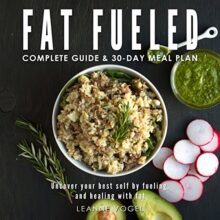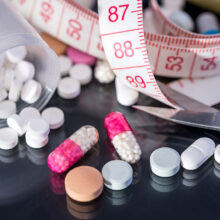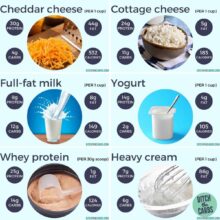Understanding Carbs
00:00:20
Carbohydrate is a nutrient that is an important source of energy in the diet. All the carbs that you eat and drink are broken down in the body into glucose and used by the body’s cells as fuel. The type of carbohydrate and the amount that you eat at any given time can make a difference to your blood sugar level. If you are living with diabetes you will need to take that into account when eating carbs. By understanding which foods contain carbs and learning how to estimate the amount of carbs in your food you can achieve better blood sugar control. So where do we find carbs in the diet? Foods that contain carbs can be grouped into starchy foods and those that contain sugar.
00:01:04
Foods that contain starchy carbohydrate include bread, rice, potato, pasta, cereals, oats and other foods made from flour such as pastry chapatis and pizza.
00:01:17
Carbohydrate foods also include foods that contain sugar, whether that be added sugar or natural sugar. These foods include sweet treats, cakes and sugary drinks as well as fruit and some dairy foods such as milk and yogurt. All of these foods are broken down in the body into glucose and will lead to a rise in your blood sugar. Let’s look at the other food groups in our diet. There are protein foods which include meat, fish, seafood and eggs. Food which is mostly fat such as butter, margarine, lard, ghee, oils and some dairy foods like cheese and cream. And vegetables. All of these foods have very little effect on our blood sugar as they are broken down into other nutrients which help to keep us strong and healthy. This also includes most vegetables and salad. Vegetables do contain some carbohydrate, however it is trapped inside tough fibre, which the body cannot break down enough to release the carbohydrate. Certain vegetables however contain more starch than others and so these can increase our blood sugar. These include all kinds of potatoes, cassava and plantain. Drinks such as lattes, full sugar pop and fruit juice contain carbohydrate as do some alcoholic drinks such as beer and sugary cocktails. These drinks will cause a rise in your blood sugar. Drinks that contain very little or no carbohydrate include water, no added sugar squash, diet soda and tea or coffee made without sugar and little milk. Some alcoholic drinks also have very little carbohydrate in and so have a minimal effect on blood sugar. These include wine and spirits. Alcoholic drinks may also lead to a drop in your blood sugar later on. If you have diabetes and would like to learn more about this please speak with your diabetes team. Now let’s have a look at the different nutrients and their effect on blood glucose. As you can see carbohydrate is broken down into glucose and absorbed into the bloodstream soon after it is eaten. Protein foods are not immediately broken down into glucose and so have a minimal effect on our blood sugar. The same can be said for foods which are mostly fat. Eating carbohydrate foods in combination with protein and fat can even slow down the absorption of glucose into the bloodstream. When we look at how quickly or slowly carbohydrates are broken down and absorbed into the blood as glucose we are looking at something called the glycaemic index or GI. GI measures how different foods that contain carbohydrate affect your blood sugar level after eating them.
00:04:06
Foods with a higher GI are broken down into glucose quickly and so cause a rapid spike in the blood sugar level. Foods with a lower GI take longer to be broken down into glucose and so get released into the bloodstream much more slowly. This results in a more stable steady rise in the blood sugar level. The lower the slower. The majority of carbs are considered to have a medium GI either because they contain fibre or because they also contain protein or fat, which as mentioned earlier can slow down the digestion of the carbohydrate in the food. This results in a moderate rise in our blood sugar. Insulin works well with medium GI foods. If you are living with diabetes it is useful to understand which foods have a very high GI and so cause a sharp rise in blood glucose. It is also useful to understand which foods are broken down so slowly that they have a minimal effect on blood sugar. Foods and drinks with a very high GI contain a large quantity of simple sugars and so they are absorbed very quickly into the bloodstream. This leads to a sharp rise in blood sugar. These include sugary drinks such as cola, fruit juice and Lucozade as well as sweets such as jelly babies and glucose energy tablets. Having lots of these foods and drinks in the diet can lead to erratic variable blood sugars. If you have diabetes it is useful to know which foods and drinks cause a rapid rise in your blood sugar in the event that it’s too low, also referred to as hypoglycaemia or hypo for short. Treatment for a low blood sugar is only necessary if you take a sulfonylurea medication such as glycoside or you inject insulin. Most other oral diabetes medications will not cause your blood glucose level to drop too low and so these high sugary foods and drinks are not necessary for you to manage your diabetes. If we look at the other end of the GI scale, there are certain foods that contain a large amount of fibre. Fibre is broken down very slowly and so the carbohydrate trapped within it cannot be absorbed that well. These foods have a minimal effect on your blood sugar level unless eaten in large quantities. If you have diabetes and you take insulin it is useful to know which foods have a very low GI as you may not need to match these foods with any insulin. These include the majority of vegetables, nuts, beans, pulses and grapefruit.
00:06:39
If you have diabetes and take insulin you may be aware of carbohydrate counting as a strategy to manage your blood sugar levels. Carb counting essentially means matching your quick acting insulin to the carb portion in your food which can result in predictable blood glucose control. There are two ways to match your insulin to your carbs. First we’ll be taking fixed doses of insulin, if you are on this regime you cannot adjust your insulin to your carb intake but you can count your carbs so that you eat a similar amount of carbs at each meal. This will work better with your fixed insulin doses. Let’s look at this in more detail.
00:07:22
A banana may contain 17 grams of carbohydrate a naan bread may contain 43 grams of carbohydrate. Both of these foods will enter the bloodstream as glucose, however more insulin will be needed for the naan bread as it contains more carbohydrate. If the same insulin dose was given for both the banana and the naan bread, the naan bread would result in a much higher blood sugar level without being able to carb count and control your carb portions. You may experience quite variable blood sugars with fixed doses of insulin. Another approach would be to vary your food choices as you like, having different amounts of carbs in your meals and instead learning to adjust your insulin dose to what you’re eating, learning to count the carbs in your foods and understand how to adjust your insulin may help you to achieve blood glucose levels as near to normal as possible. If you would like to understand more about this approach to managing your blood sugars please speak to your diabetes team or look out for the next video in this series.






